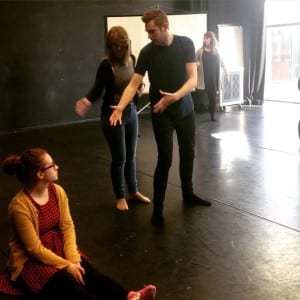When first adopting the role of set designer, I was quite daunted by the lack of knowledge I had when it came to being in a production role and what I had to bring to the table in terms of props and set. To prepare for this role I attended regular Set Design masterclass ran by the Technical Designer for The Lincoln School of Fine and Performing Arts. This was extremely helpful as we covered topics such as different types of set, ground plans, director’s briefs and budgets. Being taught that as a set designer you have a responsibility for the stage to reflect the performance as best it can.
We worked on case studies and began to understand how a budget and the directors brief can either restrict ideas for shows or whether anything the imagination lets is possible, all depending on budget.
From these sessions I approached our director, Michael Woodhall and the rest of the design team to relay any ideas we had about the production side of our show. We came to the conclusion that because we were exploring an emotional and sensitive topic, memory loss and its effect on couples, relationships and their lives, it would be sensible and look atheistically pleasing to have the technical side, set and lights to reflect the science side of memory loss.
From the conception of our ideas to focus on memories I had a vision in my head of hanging objects, these could be personal objects or objects that would somehow become relevant in the show. However I was unsure of how this fit into keeping the technical side clinical. From research such as articles on memory loss and scientific viseos and descriptions on how the brain and memory works, the idea of storage came into mind, and then the idea of storage boxes and memory keep sake boxes. My head flooded with images of boxes littering the stage full of objects that have meanings and memory attached to them. To link it with the science of memory loss I drafted sketches of boxes littering the stage with ‘cables’ connecting them. The idea was that these boxes would represent the different compartments of the brain that store memory and the ‘cables’ would be the nerves or synapse s that connected each part. This idea stemmed from research on how the brain works, ranging from YouTube Videos to academic articles. Link below;
These snapshots below are the images that stuck with me when designing.










